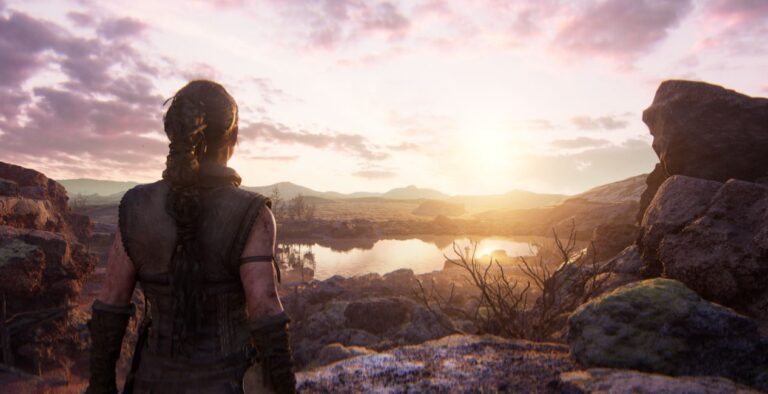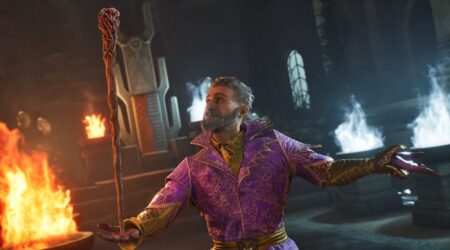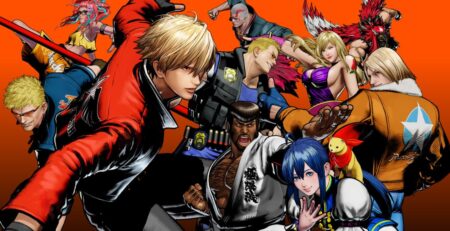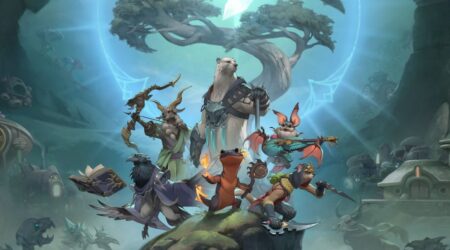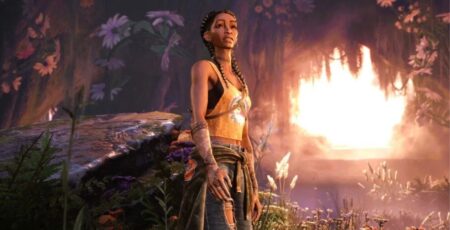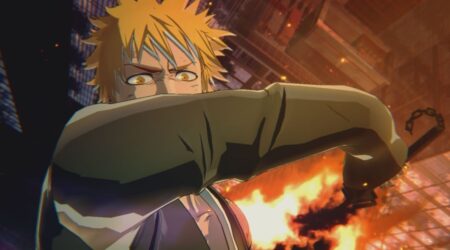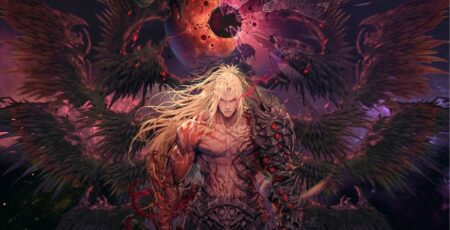Senua’s Saga: Hellblade II looks to take what was established before and build on it. Sound design is a key piece of game design that normally feels overlooked. It’s crucial to a player’s immersion in their experience, and even further, can connect us to who we’re playing as in unique ways.
2017’s Hellblade: Senua’s Sacrifice, the immersive puzzle action-adventure game by Ninja Theory, took this to the next level with a focus on binaural audio. Immersive sound lets us understand Senua’s inner thoughts, doubts, and strife in unique ways, suffocating you as you help her navigate Helheim. Now, seven years later, Senua’s Saga: Hellblade II, published by Xbox, takes everything the original succeeded on and takes it to the next level while still having several misses.
Senua’s Saga takes place a little after the events of the first game. Senua journies to new lands after her own village was lost. This leads her to be captured by slavers who, before arriving at their destination, get capsized by waves.
Still harboring self-doubt, Senua internalizes every lost, every enslaved person she couldn’t save from the wreckage and begins to take her anger out on the slavers themselves. This results in a new goal. Stop the slavers and end tyranny on the Nordic landscape, regardless of whether the tyranny is human or non-human. In the process, she will learn exactly where her place is in her new outlook on the world.
While the first game covered numerous aspects of internalizing guilt and loss, Senua’s Saga takes a different look at mental health. This time through societal struggles and how we as humans have the uncanny ability to persevere through struggles. Senua, being the lead, frames all this in an amazing way. Her “furies,” or the voices in her head, help juggle further the choices Senua makes as she travels through different landscapes and deals with a different side of Nordic mythos. This all serves as a great balance with the more human aspect of the story, too.

Senua meets several different people and characters who each face their own demons, internal and external. Each of them has to choose whether to trust a stranger who promises to help or lock their village or people away from the outside world, keeping the status quo while braving giants, draugr, weather, and worse, who each pose a catastrophic threat to their very existence. And it’s the growth of Senua’s group and their own deep histories that make this game so memorable after hitting the credits.
Senua’s character also never feels like a vessel for this story. This is her tale that we are being brought along with. Her changes are so palpable that where she ends up at the end makes complete sense. Even the others who decide to help her go through their own changes never feel like they come out of left field.
No second story-wise feels wasted. Any downtime is filled with dialogue, from Senua’s internal voices to the other characters’ interesting banter that all helps grow Senua’s world even further. Her struggles from the first game make even more sense as you learn just how much the human race shares common struggles separately in this barbaric land. And this constant banter, while it may sound like it could be exhausting, especially with the binaural audio, actually helps keep the slower moments of just walking and taking in the scenery feel impactful.
And that’s all supplemented with breathtaking scenery every inch of where you walk. This Nordic world is jaw-droppingly picturesque. Sometimes, I just stopped to take in the crashing waves, rolling grassy hills, and watery caves because they all looked so real.
There were some uncanny moments, though, where Senua just felt like she could be out of place whenever there was a slight dip in quality. But that tended to happen when there was a switch from cutscene to gameplay that normally transitioned surprisingly well together. It was those moments that I just couldn’t tell if I was controlling Senua or not that led to confusion, which thankfully quickly went away after moving around a few feet when certainty came back.

Yet while every moment of Senua’s Saga feels like it’s “The Game” to prove why you need an Xbox Series X to experience all its beauty, there were moments that felt hindered by this graphical push. Particularly with the framerate.
Numerous times, there were noticeable frame drops. Whether it be the game couldn’t handle all that was happening on the screen, like during combat or just walking around and having dips in new areas. This was very inconsistent and just ruined moments as you took things in. And nothing in the settings seemed to fix this, either. These drops just felt like a part of the game that I hope gets fixed soon.
As for the gameplay itself, you’ll be doing a lot of walking around. For this, I highly suggest you turn running on as a toggle, not a hold in the menu. Senua sometimes moves just a little too slowly, and the run makes those moments feel much better. These times, take in everything you see. Listen to everything going on. These moments are good calm before the storm.
But the slower walking almost hinders the game’s puzzle elements. Sometimes, you’ll have to navigate maze-like rooms to find symbols or other objects to unlock the way forward. These are never overtly difficult, yet can be challenging and require you to take a moment to think about what to do next. For the most part, these puzzles are just fine. They’re nothing to write home about, but they also give you a lot of leeway that shouldn’t be as prevalent.
Take the aforementioned symbol finding. You’ll be tasked to find different Nordic runes in an area made of different parts of objects or the landscape. If you are 80% of the way to aligning everything right, the game just gives it to you. It’ll do the last 20 percent. If you were nearly there, and it requires fine movements to be spot-on, fine. Move the camera for the player so they don’t get annoyed by something so minute. But giving too much assistance where it removes the “aha!” moment makes the puzzles feel more like speedbumps for the overall journey instead of adding more to Senua’s growth.

Then there is the combat. Every moment of each fight is also just completely cinematic. They’re like well-choreographed fight sequences playing out that you just so happen to also control. Each enemy is a risk and can easily take you out. Yet this is balanced by you fighting similar enemies over and over again. By learning the patterns, you can take each one out sometimes before they even attack. When they fight back, though, the fighting is fantastic.
No fight feels genuinely epic, though. They read tiring, which adds to the times when Senua and her allies are against overwhelming odds, but they can just be a little too much as you fight the same three to four enemies. If you know who you’re about to fight, then each time you know a battle is about to happen, it begins to feel more tedious.
This just gets supplemented by the fact that you’re only doing one-on-one fights repeatedly. As you kill one enemy, a short cinematic plays. This reinforces just how chaotic and dirty the battle is until you have a new opponent to face. Even bosses are just longer versions of the fights you’ve done. For the quality emanating from everything else about Senua’s Saga: Hellblade II, it’s a little disappointing to have combat, one of my personal highlights of the original game, feel like it wasn’t given that same amount of affection.
But that’s not to say every fight is dull. The finer details of combat are stellar. With particle effects being boisterous, parrying feeling impactful, and the voices in Senua’s head show her perseverence. Even if those voice lines do tend to get repetitive fairly quickly. Pay attention, though, to each enemy.
What made my jaw drop during the fights was how Senua and each enemy quickly looked haggard as each fight got longer and longer. Slashes from Senua actually showed and stayed on enemies. Their armor slowly chipped away, and Senua herself got bloodier and bloodier. By the end of a battle, Senua looked like a monster who survived by the skin of her teeth, just like those she was fighting.
Senua’s Saga: Hellblade II is a cinematic marvel. The setpieces, the improved binaural audio, and even the combat make stunning moments that rarely waste time to tell its fantastic story. Yet that goal of being a complete cinematic experience has led to some portions not meeting the same standard of quality. Even the puzzles and exploration aspects, while beautiful to explore, have less of an impact than its predecessor. While these changes tend to feel like they evolve with the characters, they are just simply not as fun.
Senua’s Saga: Hellblade II won’t be for everyone. But if you are looking for a brutal continuation of a fantastic story that feels like you’re actually playing a movie, you’ll have a great time here.
Senua’s Saga: Hellblade II is available May 21st on Xbox Series X/S and PC.
Review code provided by Xbox.
Senua's Saga: Hellblade II
-
Rating - 7.5/107.5/10
TL;DR
Senua’s Saga: Hellblade II won’t be for everyone. But if you are looking for a brutal continuation of a fantastic story that feels like you’re actually playing a movie, you’ll have a great time here.

